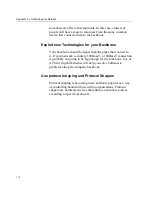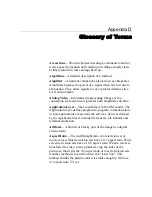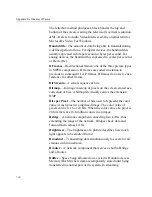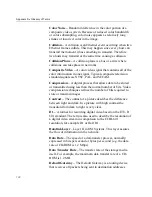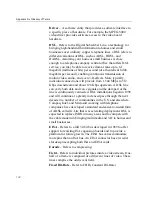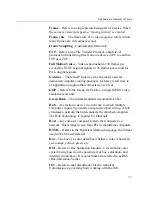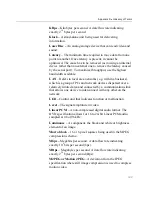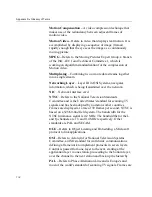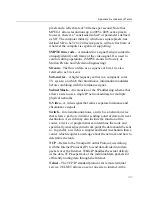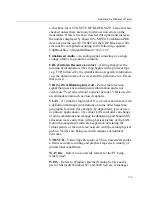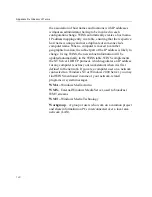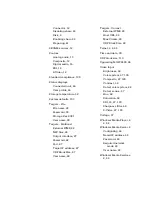
Appendix D
•
Glossary of Terms
Motion Compensation –
A video compression technique that
makes use of the redundancy between adjacent frames of
motion video.
Motion Video –
Refers to video that displays real motion. It is
accomplished by displaying a sequence of image (frames)
rapidly enough that the eye sees the image as a continuously
moving picture.
MPEG
–
Refers to the Moving Pictures Expert Group, a branch
of the ISO - IEC Joint Technical Committee 1, which is
working on algorithm standardization for the compression of
Motion video.
Multiplexing
–
Combining two or more data streams together
into a single stream.
Networking Layer
– Layer III in OSI Systems, navigates
information, which is being transmitted over the network.
NIC
– Network Interface card
NTSC
– Refers to the National Television Standards
Committee and is the United States' standard for scanning TV
signals and has been adopted by numerous other countries.
Frames are displayed at a rate of 30 frames per second. NTSC is
based on a 525/60-line/field system. The bandwidth for the
NTSC luminance signal is 4.2 MHz. The bandwidths for the I-
and Q-channels are 1.3 and 0.4 MHz respectively. Other
standards are PAL and SECAM.
OLE –
Refers to Object Linking and Embedding, a Microsoft
protocol to link applications.
OSI –
Refers to Acronym for National Television Systems
Committee, an ISO standard for worldwide communications
defining a framework to implement protocols in seven layers.
Control is passed from one layer to the next, starting at the
application layer in one station, proceeding to the bottom layer,
over the channel to the next station and back up the hierarchy.
PAL
–
Refers to Phase Alternation Line and is Europe's and
most of the world's standard of scanning TV signals. Frames are
134



